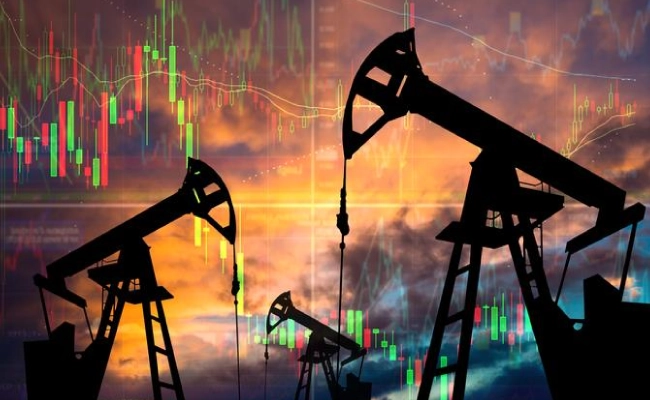The historic collapse of black gold
The global oil markets witnessed a historic day on Monday, April 20, 2020, when global crude prices collapsed below zero in an unprecedented incident. The world will still remember this date and it left many question marks about how this matter happened and its negative repercussions on the affected investors and speculators.
Despite the record cut approved by OPEC +, it could not calm the markets directly in light of the sharp drop in demand due to the expiry of the May contracts deadline, as major dealers had to find buyers as soon as possible to avoid further losses. But with the fullness of storage facilities in the United States and the whole world and the absence of buyers, the balance in the market of supply and demand was imbalanced hysterically without registering any gaps on the charts, then the price fell to 37.63 dollars below zero! The main explanation here for this moment is what is known as paper barrels, this is a term used by stock speculators. As Hedging traders who deal with paper contracts, the time period for the expiration of their futures contracts is approaching. And speculators in the market, who in turn bought contracts of huge size for three consecutive months, did not find any way to sell them through any of the buyers in the global financial markets or even to sell them, even if they decided to receive oil shipments in full, as there are no places to store them.
The oil markets have a large surplus in stocks as a result of the decline in demand due to the emergence of the Corona virus. This is economically considered an oversupply - an excess of production, which led to enormous pressure on prices and a severe decline without any corrective movement in prices through the Fibonacci equation, even at 28%. Surplus and stopping indiscriminate production, which requires commitment from all concerned countries at a rate of 10 million barrels per day. America, Norway, Canada and Brazil were supposed to join the coalition to reduce production, and this has not happened so far.
There are also 4 Saudi giant oil tankers that have been roaming the seas for about a month, looking for any request at a low price, so they were rejected by everyone, including Egypt and Singapore. Not to mention Aramco's recent decision to suspend and close about 50% of the company's refineries in Saudi Arabia. This part also has to do with the Corona virus, which caused the collapse of global demand for oil and its derivatives due to the cessation of energy production and transportation in the world three months ago. Those speculators on paper are the ones who incurred huge losses after they believed the words of the American president that oil prices will rise and that things will return to normal very quickly. But this did not happen. Because technically, according to experts, there is a surplus of hundreds of millions of barrels stored around the world. Therefore, everyone was surprised by the continuous large pumping of oil and the market's reactions, given the lack of drainage and the lack of a voluntary reduction in production.
After this severe drop in demand, car-free streets, declining consumption, the cessation of air and land freight and civil aviation, and the collapse of major companies, it is expected that the contracts for the month of August and September will rise naturally, as the global economy must recover. Even if gradually, after the absence of the Corona virus, and most of the news about Corona indicates that it will end within a period of time ranging from six months to a year, which makes the bet again on bearing the risks of keeping and storing oil very high.
The oil market is highly vulnerable to political and economic changes and is based on supply and demand.
During the past weeks, the Director of the International Monetary Fund, Kristalina Georgieva, stated that the global economy had already entered a stage of recession, and this had clear repercussions in the appreciation of the oil market, so oil futures deals, such as Brent, began to decline, RBOB and Brent.
But the main question here is how can stock prices reach negative prices, that is, below zero, in a precedent that has never occurred in the history of trade and trading markets. Mathematically, it is as follows, when an investor or speculator buys a commodity with all the money he has in his trading account, this commodity begins to decline for economic reasons and prices continue to decline until capital begins to erode and most financial companies begin to liquidate customers’ positions when losing 80% of their own capital Without asking him for any margin in order to cover the financial shortfall in the account, claiming that this is done electronically
FXGROW Financial When there is a decline in the capital in the client's account by about 70%, it does not perform any closing process, and the remaining 30% is an official performance provided to the client by FXGROW as it is entitled to him. From a technical point of view, if the prices continued to decline on the next day and the account reached below zero due to the large difference between the closing price and the opening price of the commodity, the company does not, for its part, ask the customer for the number that is Minus, out of concern for the customer’s situation, and this is what is known as the negative policy. Balance protection















